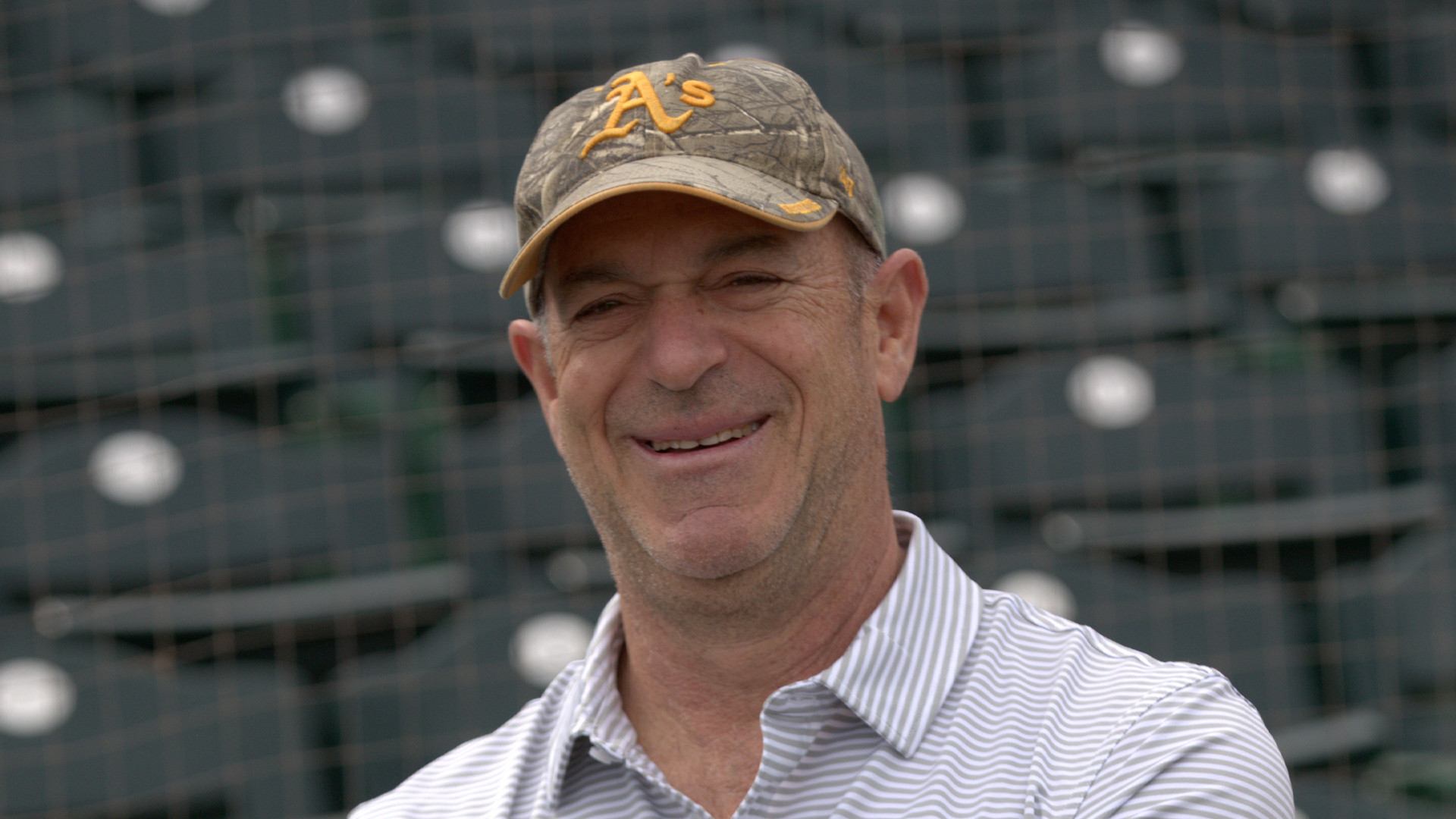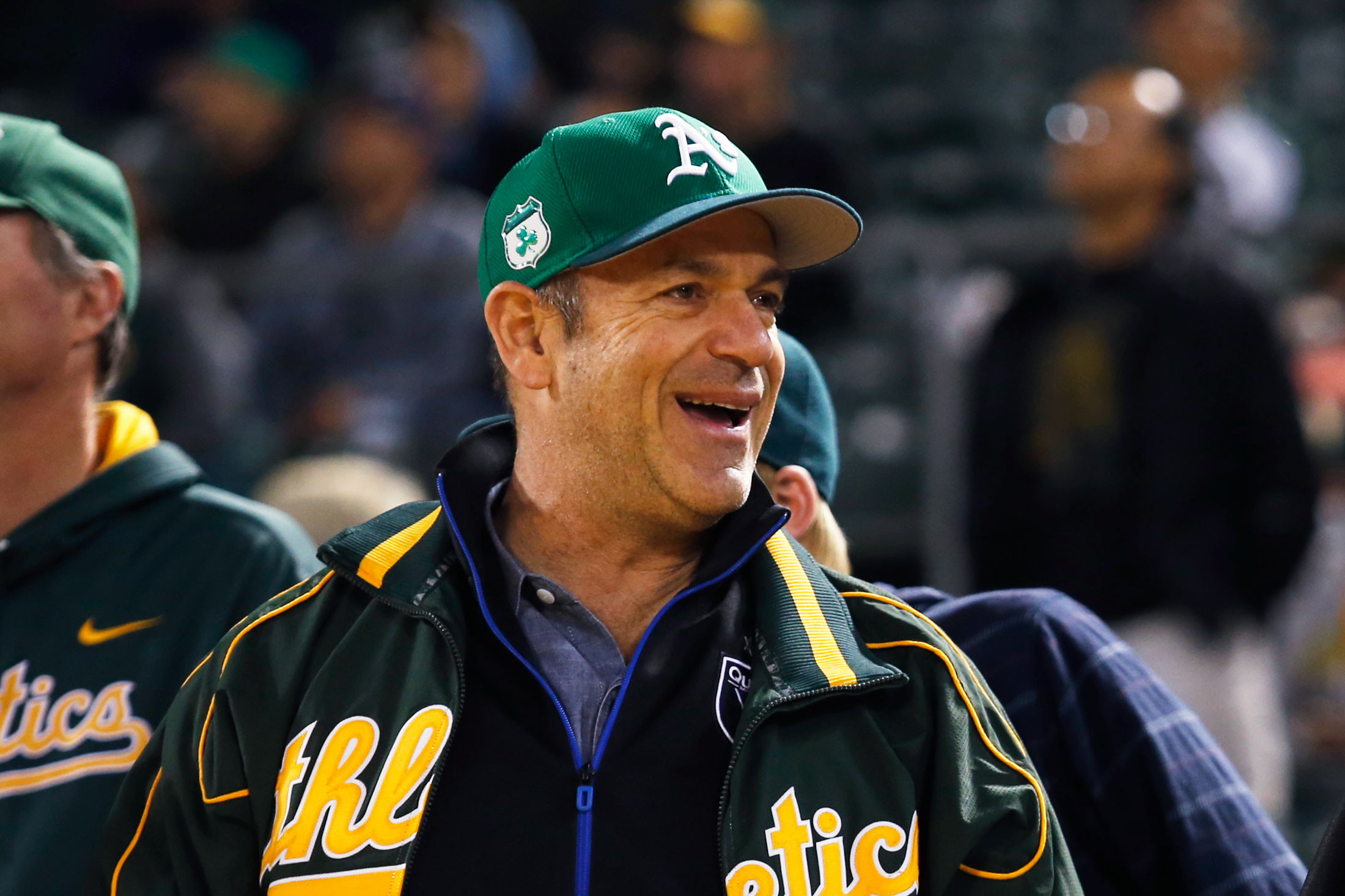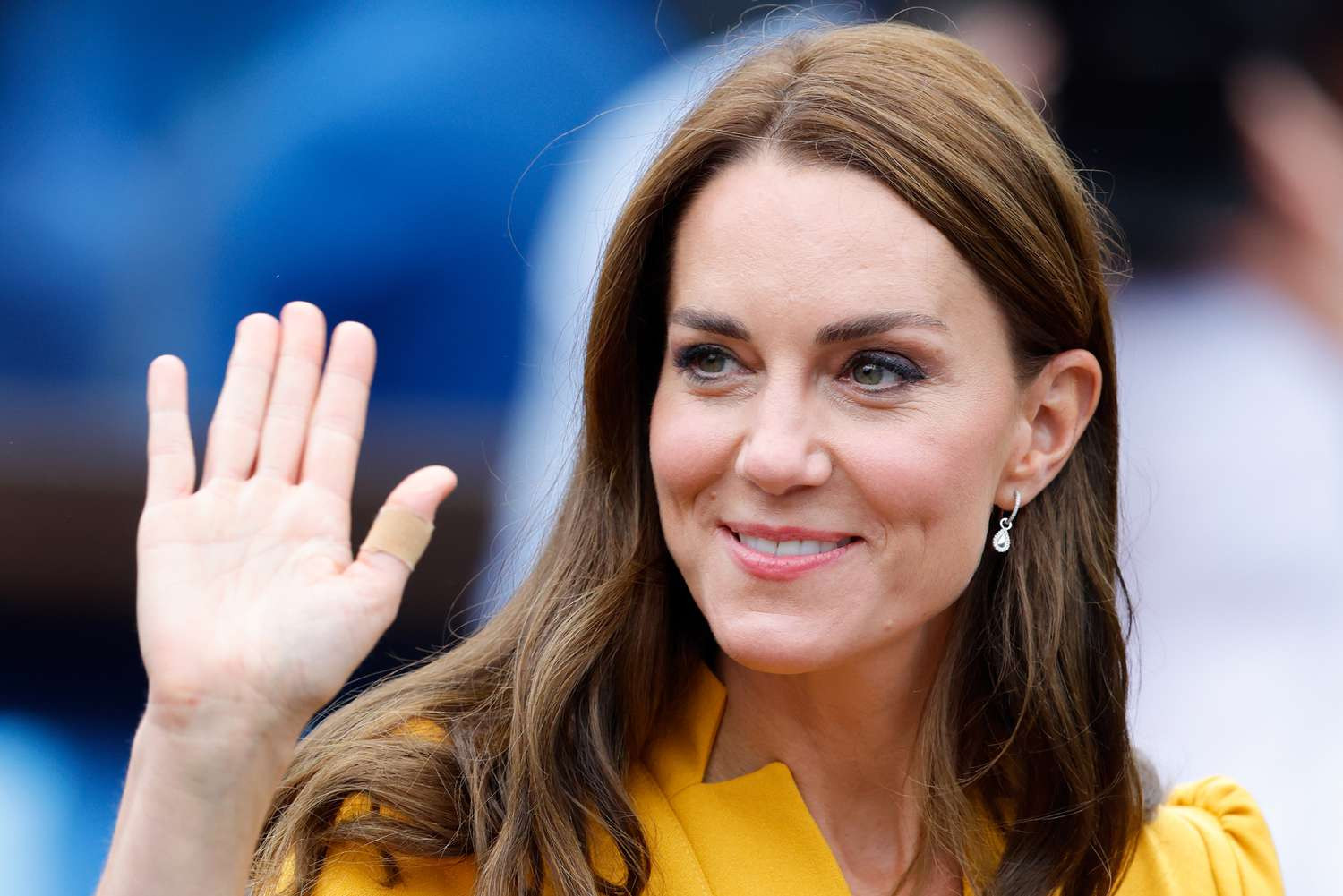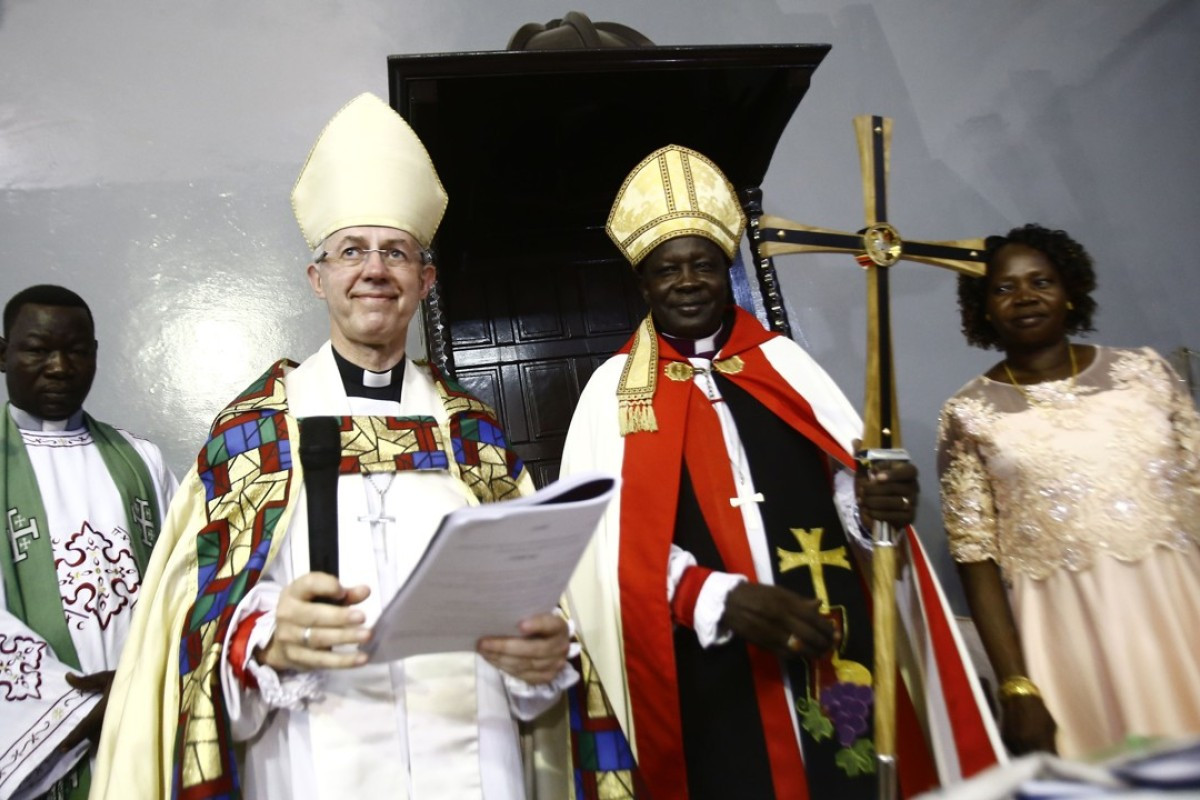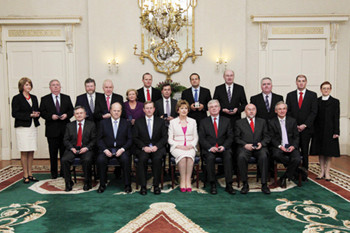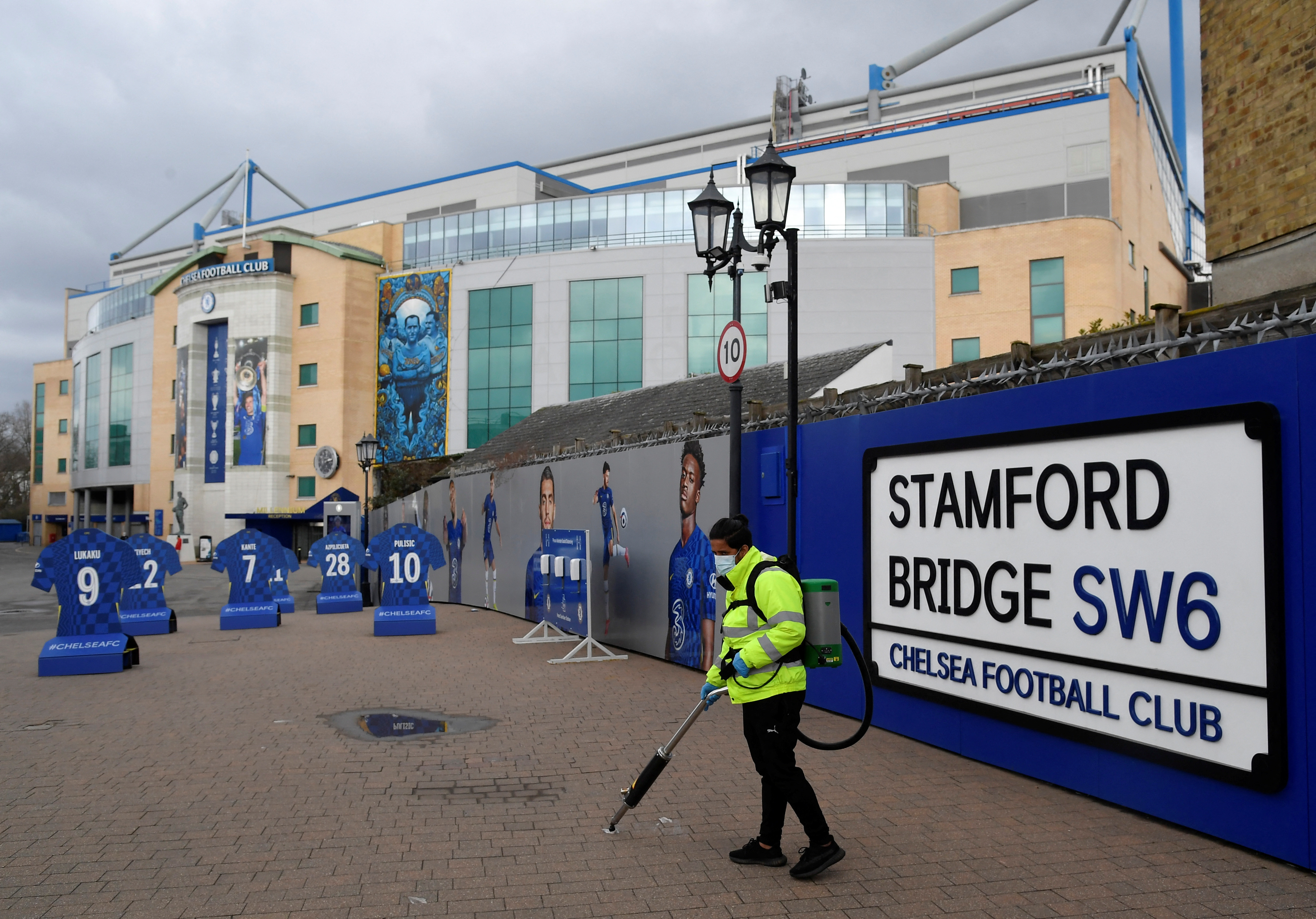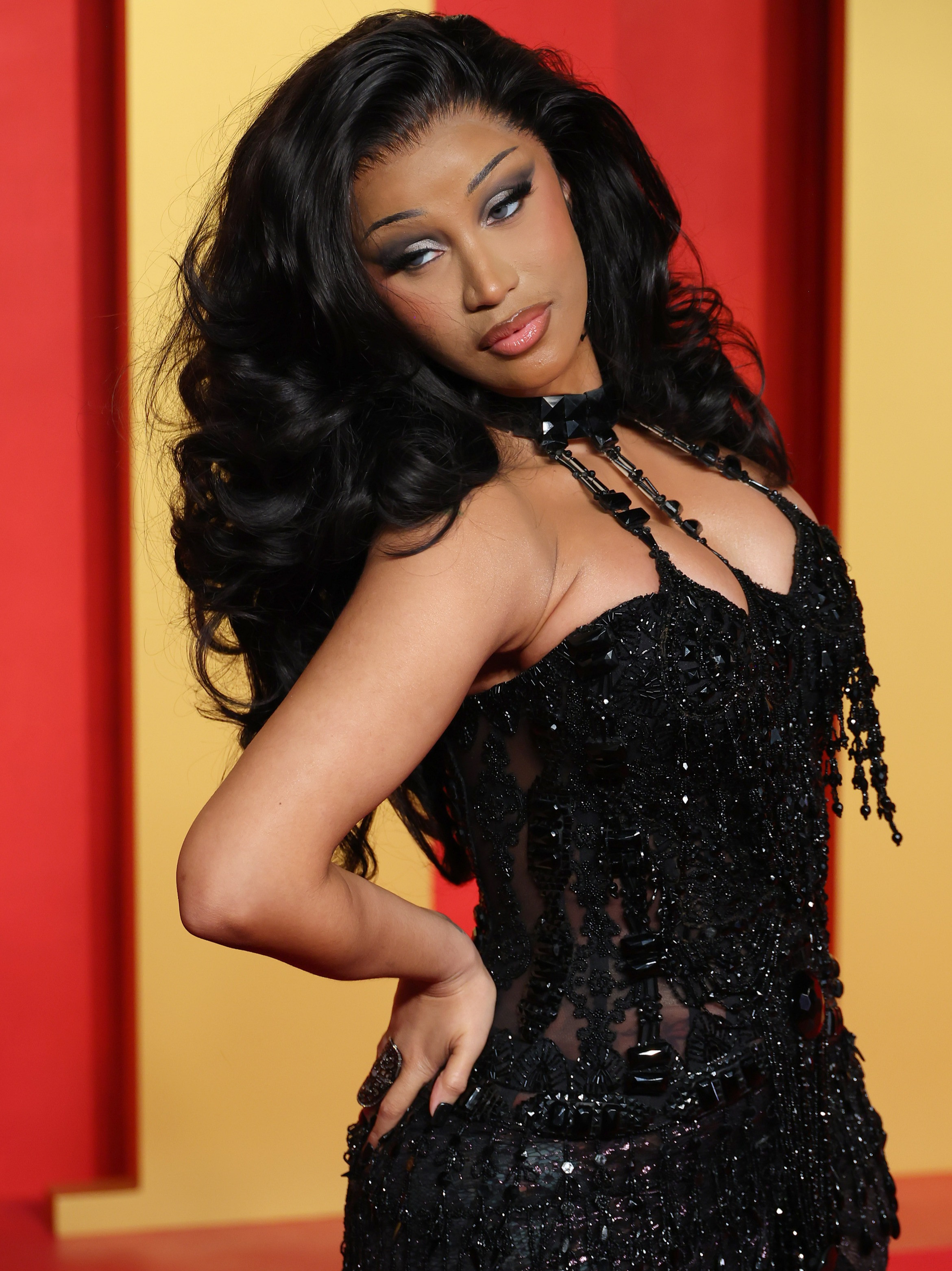A Bay Area news anchor had no interest in Oakland Athletics owner John Fisher's goodbye letter to fans as the team prepares for its final home series of the season before the franchise leaves the city after 56 years.
Larry Beil of KGO-TV called Fisher's letter a "great work of fiction," criticized him for surrounding himself with "incompetent yes men" and being "a serial penny-pincher"
Fisher's letter touched on the history of the franchise in Oakland before stating it "proposed and pursued five different locations" over the years to build a new stadium that would keep them in the Bay Area, but a binding agreement with MLB to find a new home by 2024 forced ownership to explore a move to Las Vegas.
Even more than the sadness, even more than the anger and the despair and the disgust, there is loneliness. As the A's final season in Oakland winds down, the Coliseum's endless concrete seems to contract, the life of the place leaving like a long sigh. Game after game, the collection of fans, tiny dots on a huge map, sit in near-penitential quiet. The random "Sell the team" chants, once hearty and frequent, have taken on the tone of plaintive wails, like desperate pleas from the bottom of a well.
The concession stands are mostly shuttered, collateral damage from the team's decision to announce an eventual move to Las Vegas -- first stop: Sacramento -- and leave Oakland without a major professional sports franchise for the first time since 1960. The A's will play their final game in the Coliseum on Sept. 26, the conclusion to 57 seasons in a building that has been nearly abandoned and ignored by fans and team ownership since John Fisher announced a deal to move to Las Vegas nearly 18 months ago. The place feels hollowed out, its soul cast aside.
The departure of a major sports franchise, let alone three, is a story most often told through negotiations and recriminations, proposals and counterproposals, public subsidies and private financing. It's the unending story of owners and commissioners and politicians, all positioning and posturing. But what bobs in the wake when teams leave, whether it's the Warriors and Raiders in 2019, or the A's this month, are those left untethered, people who lose jobs, friendships and a vital connection to their community.
On the first Monday in August, the opener of a series against the bad-beyond-adjective White Sox, Kendrick Thompson -- known as Ice Cold Kenny Bo -- shows up to one of the cave-like employee rooms in the Coliseum's beehive interior. As he has before every game for the past 13 years, he puts on his headphones to begin his prep for another shift as the building's most celebrated beer vendor. He begins his stretching routine and cinches up his back brace; carrying a metal tub of ice filled with 16-ounce beers for more than two hours a night is an athletic feat in itself. He reminds himself to keep smiling no matter how rude a customer might be. As game time nears, he puts on an A's elephant beanie and he talks his usual smack to his coworkers, telling them he's going to outsell them today, just like every other day. There's a bit of gallows humor at work here, since he's bragging about outselling seven other vendors in a crowd that averages about 10,000 fans per game and routinely draws fewer than 5,000 on weeknights.
Thompson grew up in Oakland, his stepfather a vendor before him. He attended games as a fan until one day his stepfather asked him if he'd like to come to work with him. He taught Kenny Bo how to hold his money, how to deal with drunken fans, how to keep that smile on his face. "This job saved my life," Thompson says. "It gave me a purpose, a place to be, and it taught me how to deal with every kind of person." He worked the final Raiders game in the Coliseum, too, and he'll be there on September 26, hoping for a peaceful end. "Lot of tears," he predicts. "Lot of fans who don't want to leave."
On this night, there are a few fans in White Sox caps and shirts, sheepish in their fandom, many of them trying to strike the Coliseum from their ballpark bucket list before it's too late. (They also allow A's fans, in a black-swan-level event, to feel superior.) Twenty-five minutes before first pitch, a lady and her young son ceremoniously tape two "Sell" flags to the railings in the right-field bleachers, while a guy sitting a few rows away proclaims to all who will listen that he will, indeed, "act a fool" on September 26.
Once the game starts, Thompson weaves his way through empty rows and empty sections along the Coliseum's lower deck, barking out his call and searching for an upraised hand. He has his own koozies with his slogan -- "If it Ain't Ice Cold, it Ain't from Kenny Bo" -- but not even that can contend with the simple realities of supply and demand.
Will MacNeil, known as Right Field Will, sits in the first row of the right-field bleachers every single home game. His sensibilities portray the dichotomy of the present-day Oakland A's fan: he waves an A's flag while using his booming voice -- he's a part-time public address announcer for the Class A Stockton Ports, an independently owned A's affiliate -- to denounce team ownership. He's wearing an A's cap, A's jersey and his ever-present Oakleys --the setting sun like fireworks in the eyes of everyone sitting in right field. He abides by the many and baroque rules of the bleacher crew: always salute the right fielder; only yell "Let's go Oakland" when the A's have a runner in scoring position; employ a slow clap that begins at the belt and climbs and quickens whenever an A's pitcher has two strikes on a hitter.
White Sox starter Ky Bush makes his first big league start in front of an announced crowd of 4,971, with, charitably, a third of that number occupying seats. ("The fans who do show up show up every single day," A's All-Star Brent Rooker says. "You're seeing the same people over and over. You build relationships with the people in right field, the people who sit along the dugout. That's the special part of this place and what I'll remember.") Right Field Will and a few of his friends are doing their best to make the game feel important, but there is a near-complete lack of tension in the air. A's fans have processed the past 18 months the way ancient villagers reacted in the face of a marauding force: shock, anger, helplessness, surrender. Their idea of justice left a long time ago.
Will waves his A's flag from the first row in right, three times for every A's batter and yells, "Let's go Oakland!" only when there's a runner in scoring position. It is a game between teams a combined 81 games under .500, but it still means something out here, where the realities of time weigh heavy. When the A's win, pushing Chicago's losing streak to 21, MacNeil stays in his seat, leaning forward with his hands on his chin, occasionally wiping tears from his eyes, watching the end edge ever closer.
I was there as a kid for three World Series games, one each in 1972 against the Reds, 1973 against the Mets and 1974 against the Dodgers, the green grass such a contrast to the gray concrete, the ice plant running from right-center to left-center, the Oakland hills resplendent in the background, Reggie Jackson's corkscrew swing, booing Pete Rose for all his sins, both known and unknown.
On April 4, the A's announced their intention to play the next three or four seasons in a minor league ballpark in West Sacramento. On that day and in that ballpark, during a news conference called barely two hours before it began, team president Dave Kaval made a declaration: the 2024 season, the team's last in Oakland, would be a celebration of the 56 years and 57 seasons the team played in the Coliseum. They'd send the sturdy old building out with a bang, Kaval said with his usual wide-eyed exuberance and fridge-magnet poetry. And in that moment, with the team's near- and long-term futures announced, it seemed possible to believe the team might finally turn its attention to reflecting on, and appreciating, what it's leaving behind.
But inside the Coliseum, maybe the only overt gesture toward the team's history is a video montage played before every game that ends with Dennis Eckersley racing across first base and throwing his arms in the air as he records the final out of the 1989 World Series. There is no suggestion that anything is ending, or that the moments depicted relate to anything beyond the context in which they occurred. History must be inferred.
"There's been absolutely zero celebration," says Bryan Johansen, co-owner of Last Dive Bar, an A's fan group and merchandise site. "They haven't touched it with a 10-foot pole. ... I mean, how many times can we get slapped in the face? We all look like Santa Claus. We've all got red faces from how much we've just been slapped around by these guys -- to the point where it seems like they're doing it on purpose."
The A's acknowledge the impossibility of their situation; maybe there is no elegant way to move a professional sports franchise after 56 years, especially after decades of acrimony between the city and the team. They emphasize their efforts to remain in Oakland; they invested $100 million in the failed project to bring a roughly $12 billion waterfront ballpark village at Howard Terminal. The decision to move to Las Vegas, announced in April 2023, sparked a series of fan protests filled with angry and vulgar anti-Fisher chants; the decision to move to Sacramento, announced a year later, sparked fresh anger and harsh words but mostly resignation, seen most clearly by attendance numbers. Given that, how do you celebrate your way out of town?
"Have we done enough?" asks A's board member Sandy Dean, a longtime advisor for the Fisher family and a partner in numerous Fisher investments. "It's a good question, and in some ways it's hard to know what could be enough to capture the significance of almost 60 years in Oakland with a diverse and passionate fan base."
The team ticks off its efforts. It began "Alumni Sundays" in early June, with former players signing autographs for an hour before the game and throwing out the first pitch. There have been three "Double Play Wednesdays" -- $2 tickets in some sections and $1 hot dogs. The A's Community Ticket Program has given away two complimentary tickets -- nearly 80,000 total -- on weekday summer games to nonprofit and community organizations, as well as educators, healthcare workers, first responders, military personnel and youth softball and baseball coaches and players. There were four fireworks shows, three drone shows and five bobblehead giveaways.
"Whatever they say, I do not feel part of anything being celebrated," says Robb Roberts, whose museum-level collection of A's memorabilia makes him a sort of de facto team historian. "I have never seen anyone 'celebrated' in this fashion. I don't understand it ... I don't feel like they want us there."
Jennifer LaMarche, known as Left Field Jenny, is a 24-year season-ticket holder in the left-field bleachers who vowed to attend all 81 home games this season. The question of whether to support the team financially has been a point of contention among A's fans; unlike LaMarche, many see putting money in Fisher's pockets as a betrayal of the cause. "I decided this was something I needed to do for myself," LaMarche says. "I earned my money; I'll spend it the way I want." She worked it out with her boss; she would check her emails before first pitch on day games and after the last out. She would work into the night if necessary.
"I appreciate the Alumni Sundays," LaMarche says. "I think that's a nice touch, but I don't see how that's celebrating the whole history of the A's in Oakland. They brought giveaways back because they'd taken those away from us for a short time. Great -- people like bobbleheads, but I don't see how that's celebrating. Celebrating Oakland? Like, Oakland itself, and the time here? They're not living up to that end of the deal at all."
In response to a question I posed to a team executive -- what does the team feel it owes the city and A's fans as September 26 approaches? -- the A's issued the following statement:
We are deeply grateful to Oakland for being home to the A's for nearly 60 years. In that span, the team and its fans celebrated four World Series championships, served as home to seven American League MVPs, made countless lasting memories, and achieved a storied place in baseball history. After an earnest and unprecedented effort to bring a visionary ballpark to downtown Oakland, we were unable to reach a deal, and more importantly, secure a reliable path to a fully approved project. We appreciate the community members, local leaders and staff who worked diligently to build a new home in Oakland and applaud the fans who passionately advocated for the team to stay. The A's time in Oakland will always be a cherished part of this franchise's history, and we carry that spirit forward on this journey to Sacramento and eventually to our new home in Las Vegas. We extend our heartfelt gratitude to the loyal fans for their unwavering support throughout the years.
"The team's messaging has consistently sought to be up-front, honest and straightforward," Dean says. "And even with that, in the end, the team is moving. We know that is a hard outcome."
I was there in high school, too many times to count, thanks to a classic early '80s promotion that allowed fans to get free tickets by answering trivia questions through a touchtone phone, which meant, in my case, the nearest available pay phone. I amassed so many tickets my friends and I couldn't use them all, but we tried. One Saturday afternoon, one of my buddies brought his portable grill and we tailgated in the north lot, cooking something unhealthy and playing catch around cars. When it was time to enter the stadium, we faced a dilemma: what to do with the grill and its white-hot coals. We were smart enough to know we couldn't put it in the car or the trunk, so we had the brilliant idea to shove it under the back of the car. When we returned after the game, the grill had been pulled out into the open, a note attached to the bumper: "Next time, pour water on the coals before you put it under the car."
Around midseason, the rumors started proliferating. Some were wild, for sure, but none of them seemed to strain the bounds of plausibility. In one, rats were running wild under the tarps in Mount Davis, the unused deck far above center field, and those rats managed to shred an entire pallet of bobbleheads commemorating Mike Fiers' no-hitter in 2019. And sometime in early August, word began circulating among some well-connected fans that the team was planning to bring in dump trucks to clean out the rooms in the Coliseum's catacombs, known as "Minus-22" for being 22 feet below sea level.
The "Minus-22 Caper" became the target of much speculation. What could be down there? Why wouldn't the team just take the old giveaways and pass them out? It became the Al Capone Vault of Coliseum lore; Roberts, the collector, wondered if his grail -- the infamous Harvey the Rabbit pop-up ball dispenser owner Charlie Finley installed and used for just the 1968 season -- was down there somewhere. There was talk of organizing fans to spy on the operation.
And then it happened. In early August, while the team was on the road, the dump trucks arrived and the forklifts went to work, completing the Minus-22 Mission without incident. Afterward, I asked a Coliseum employee who requested anonymity whether they cleared out anything fans might have wanted. "If people want old giveaways from 2018-19 that have rat feces and dust on them, then probably," he told me. "The dust cloud from taking stuff out stayed for a full 24 hours."
Through it all, A's fans hold out hope. Every report that casts even the slightest bit of doubt on the team's move, either to Sacramento or Las Vegas, is treated as a sign from the heavens. The Sacramento decision felt rash, and Rob Manfred's decision to approve a move to a minor league park felt like one more concession to Fisher. To make it work, they will rip up the grass at Sutter Health Park in West Sacramento and replace it with artificial turf. Between the A's and the Sacramento River Cats, they'll play 156 games over the year's hottest six months on that plastic, for a minimum of three years, in temperatures routinely exceeding 100 degrees. Three or four years is billed by the team as a temporary stay, sort of a Vegas-style residency, but the average big league career hovers somewhere around five years.
Over the past month, numerous agents, most vocally Sacramento-area native Scott Boras, have predicted the A's will have trouble recruiting players to join them while they're in Sacramento. The A's believe they have assembled the type of young, vibrant roster -- Lawrence Butler, Shea Langeliers, Mason Miller, all under the steady guidance of manager Mark Kotsay -- that will override concerns about the ballpark or the team's immediate future.
The Major League Baseball Players Association has yet to approve the changes to Sutter Health Park. There are no final renderings of the Las Vegas ballpark. The list goes on. The A's, in a characterization the team believes is unwarranted, are viewed as the mythical snake eternally eating its own tail. It was a sign when the A's abandoned the first site they planned in Vegas, and a sign when it was revealed that the current location, on the site of the soon-to-be demolished Tropicana Casino and Resort, consists of just 9 acres to build a domed or retractable-roof ballpark. (The A's say the space is not an issue, but the smallest park in the big leagues, Target Field in Minneapolis, sits on 8 acres.) And it is considered an ongoing sign that Fisher has not presented a financing plan to fund the ballpark costs beyond the $380 million in public funding provided by the state of Nevada.
"It's interesting that the financing question has continued to persist," Dean says. "John Fisher has said on several occasions that his family will invest the capital that is needed to build the project. The A's relocation was approved after a three-month review by a relocation committee at MLB that was made up of financially sophisticated owners. As I talked about at the [Las Vegas] Stadium Authority meeting in July, we are in good shape for financing and have been planning for this for some time."
I was there as a college student from 1982 to '84, a quick BART ride from Berkeley, watching bad teams that featured the overflowing effervescence of a young Rickey Henderson under the semi-watchful eye of manager Billy Martin, and later the dour stylings of an aging Dave Kingman. I was in the left-field bleachers one night when Jim Rice hit a ball off Dave Beard that is either: (a) still orbiting the Earth, or; (b) embedded in a column of concrete somewhere above and beyond where I was sitting. The sound of Rice's bat connecting with Beard's pitch was, I'm ashamed to admit, one of the seminal moments of my college years. Out there in the left-field bleachers there was a security guard everyone called "Guns" because of his hypertrophic biceps. He'd stand behind the last row of the bleachers, arms crossed, wearing a short-sleeve shirt four or five sizes too small, seams everywhere cowering at the mere thought of him. He looked foreboding but was friendly as hell, just like the place itself.
It's the last of the multipurpose ballparks, a relic of the '60s and '70s, back before a certain segment of the population decided it needed craft cocktails and leather couches and walled-off suites to enjoy -- and, often, ignore -- the games. Somehow, there was a time when it was enough to mold a mountain's worth of concrete into a circle and fill it with plastic seats surrounding grass, back before fans became walking bar codes. The Coliseum is the last building standing that can say it hosted Johnny Unitas and Carl Yastrzemski, Franco Harris and Nolan Ryan, Tom Brady and Ken Griffey Jr.
Kirk Morrison was born in Oakland, grew up in Oakland, became a star athlete at Bishop O'Dowd High School in Oakland and eventually played the first five seasons of his NFL career with the Oakland Raiders. He calls the death of Oakland sports "a bit of my youth, my childhood being ripped away. Going to games, it wasn't corporate. It was genuine, genuine love for the sport, for the players, and an appreciation of their talents."
His father had Raiders season tickets when the team returned from Los Angeles in 1995, so he saw it from all angles, and when he played for the Raiders, he'd sit in the locker room before games and after warmups and hear the stadium awaken above him, like the first stirrings of a volcano. He'd head out to the field for introductions and wait at the tunnel, as beer and whatever else waterfalled over the edge. He'd stop and listen to the primordial roar and take a deep inhale of whatever drifted his way.
"Just an Oakland smell," Morrison says. "It smells like an underdog. Smells like someone who's hardworking, who's not afraid to get their hands dirty, who's not afraid to sweat, who's going to give you everything they got."
I was there as a young reporter for the Sacramento Bee for the 1990 World Series, and after Game 4 I went from home clubhouse to visiting clubhouse relaying a proxy war of words between Reds reliever Rob Dibble and A's ace Dave Stewart. Like a human telegram, I told Stewart that Dibble contended he intentionally hit Reds outfielder Billy Hatcher in the first inning, and then returned to the Reds' clubhouse to tell Dibble that Stewart called him a punk, unworthy of his attention. This went on for four rounds -- Dibble can't talk 'til he wins 20 or saves 40; Stewart is lucky he's in the American League and doesn't have to hit -- with Dibble sitting at his locker soaked in beer and champagne, Stewart standing at his, still in full uniform, his fury at losing the series lessened somewhat by his fury at Dibble.
Robb Roberts calls himself a "collector of opportunity," which is his way of saying he doesn't have unlimited funds to satisfy his passion. He's created a museum's worth of memorabilia through connections and hustle and the sheer force of his enthusiasm.
Roberts has 306 game-used bats, including the one Matt Stairs used to drive in six runs in an inning. He has game-used white cleats from Mark McGwire to Shea Langeliers. He has the jersey vest Lew Krausse wore when he threw the first pitch in a big league game at the Coliseum. He has catcher's gear -- lots of catcher's gear. He acquired a player's traveling suitcase from the 1970s, and inside he found a zipper pouch containing a razor blade and a mirror smudged with a white powder. (He met the player, who denied knowledge of the gear with a wink and signed it.) He has two pairs of game-used pants Rollie Fingers wore in the 1972 and 1973 World Series. He has the bat Mike Gallego used throughout the four games of the 1990 World Series, and he and Gallego have since become friends.
"How'd you get that bat?" Gallego asked him. "I gave it to the bat boy."
"Yeah, you did," Roberts replied. "And I got it from him."
Every baseball, every bat, every shin guard takes him back to a moment he spent in this big ugly place with his father or his kids or his friends. He once stood stock-still in the right-field bleachers for the longest time -- the TV cameras kept returning to him, over and over -- to pay homage to the retiring Stephen Vogt. He was dressed in a full A's uniform covered by a set of Vogt's game-used catcher's gear.
"Collecting overall is selfish," he says, "but everything I have takes me back to those moments in my life."
His team will be gone, and he'll look at his collection and see dots on a timeline, an incomplete but important reel of his life. He'll be there for the last game Thursday, by himself to protect his two children from what might happen if things get ugly. He's mused over some of the things he'd love to add to his collection: his bleacher seat, the pitcher's mound, home plate, the elusive Harvey, one of the Coliseum's famed urinal troughs. (He's remodeling his home and has a perfect spot for it.) But in the end, he knows he's not going to get any of those things; he's going to sit in the bleachers, stare at the perfect grass and the crisp white lines one last time, and watch another chunk of his life drift into the past.
"I don't know what you want to call it?" he says. "A funeral? My wake?"
I was there this summer, and last summer, seeing everything in a different light. In an early-September game against the Mariners -- announced attendance: 4,390 -- my wife and I sat near the top of the second deck, down the right-field line. We were the only people in the entire section, a great spot to watch the sky over the Oakland hills turn orange then pink then purple. Late in the game, we moved down to the lower level, where the television closest to us in Section 115 was tuned to the Golf Channel; on the field, the Mariners were beating the A's by 13 runs, on the screen, past highlights of the Solheim Cup played endlessly, and no one seemed to notice.
Over the past four seasons, A's fans have seen their team gutted, their ballpark forsaken and ticket prices increased. They've heard Dave Stewart, Oakland's own, answering, "In a heartbeat" on the team's postgame show when asked if he would relinquish his 1989 World Series win if it meant the team stayed in Oakland. They read the words of beloved former owner Wally Haas, speaking to the San Francisco Chronicle, castigating Fisher for ruining the relationship with fans and the community by tearing the team down and neglecting the ballpark. "You're giving up on a community where fans, for valid reasons, have stayed away," Haas said. "I wish baseball could have done more." They watched Giants manager Bob Melvin, who spent 11 years as manager of the A's, wear white shoes in homage to the A's when he took the lineup card to home plate before the final game of the final Bay Bridge Series.
In mid-August, Right Field Will stood in the concourse outside the right-field bleachers and told me, "It's starting to get real. I hate this. September is going to be brutal." Through to the end, he'll salute Butler in right field and start his clapping at the waist and yell "Let's Go Oakland" only with a runner in scoring position. He and Left Field Jenny and Kenny Bo and Robb the collector try not to think about the rhythm of the season, and how it works as a sturdy foundation for the structure of their lives. They have no plans to follow the team to Sacramento, so they'll hope against hope, searching for signs, continuing to believe nothing under Fisher's stewardship is final until it is.
As Thursday approaches, they'll gear up to contend with the emotions. All those quiet nights, all those cathartic chants into the ether, figure to be a prelude to one last blowout. The die-hards swear it'll be peaceful; they'll be content to stare out at the field for as long as it takes to make sure they remember. They've learned through experience: If nobody wants to throw them a party, they'll throw it themselves.




